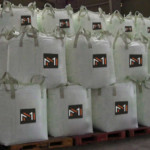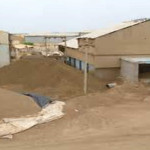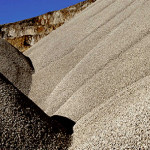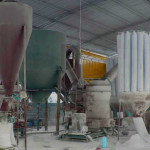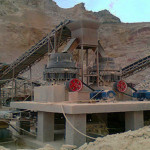wp-content/themes/MahalaxmiMinerals/images/timgslider/history/
Bentonite, the multi-tasking mineral, is a naturally occurring clay generated from the alteration of volcanic ash. The major clay-like mineral in bentonite is montmorillonite. Bentonite in addition to montmorillonite, contains small portion of other mineral matters, such as feldspars, kaolinite, volcanic glass, quartz, and organic matter.
The greatest use of bentonite results from its swelling action in water. By adjusting the water content in combination with a given quantity of clay, Bentonite water mixtures are used for bonding, plasticizing and suspending applications. Bentonite is employed by numerous industries ranging from agriculture to environment and foundry to oils to perform a multitude of jobs due to its various properties such as hydration, swelling, water absorption, viscosity and thixotropy.
The name Bentonite was coined in 1848 by Wilbur C. Knight to a highly plastic clay material occurring near Fort Benton, Wyoming.
There are two kinds of bentonite clay: swelling bentonite, also known as sodium or Western bentonite, and non swelling bentonite, known as calcium or southern bentonite. Both types of bentonite are formed from volcanic ash that has been deposited in water.
SODIUM BENTONITE:
Sodium bentonite swells many times its mass when wetted by water. This property makes sodium bentonite a very useful sealant as it provides a self sealing, low permeability barrier.
As a result of its excellent colloidal properties, it is often used in drilling mud for oil and gas wells and boreholes.
Thus because of its high absorbency and clumping tendency, sodium bentonite finds great usage for mud drilling, clumping cat litter, and as a bonding agent for feeds, medicines and cosmetics.
CALCIUM BENTONITE:
Calcium bentonite is a useful adsorbent of ions in solution, as well as fats and oils. Thus it finds usage towards the bonding of foundry sands and decolorisation of oils.
Calcium bentonite may be converted to sodium bentonite (termed sodium beneficiation or sodium activation) to exhibit many of sodium bentonite’s properties by an ion exchange process.
Calcium bentonite is referred to as “living clay” because of the belief found in many cultures that it is useful as a medicine. The modern alternative healthcare industry uses calcium bentonite extensively for internal and external toxin removal that is believed to be based on ion exchange.
In 2011, U.S. was the top producer of bentonite with almost one-third world share followed by China and Greece.
Most high-grade natural sodium bentonite is produced from the western United States in an area between the Black Hills of South Dakota and the Bighorn Basin of Wyoming and Tokat Resadiye region of Turkey. Mixed sodium/calcium bentonite is mined in Greece, Australia, India, Russia, and Ukraine.
In the United States, calcium bentonite is mined primarily in Mississippi and Alabama. Other major locations producing calcium bentonite include Germany, Greece, Turkey, India, and China.
In India, Gujarat has a large amount of Bentonite deposits. Almost three fourth of the Bentonite deposits are in Kutch districts in Gujarat. In fact, the sodium Bentonite found in Kutch has high swelling and gelling properties along with good viscosity and liquid limit and high Methelyne Blue Value.
Bentonite with calcium ion is also found in abundance but they swell less as compared with sodium Bentonite but they show higher green strength.
Bentonite varies in color from grey to white, yellow, green, blue, black but more often yellow or yellowish green.
PRODUCT USES:
- It is used in preparation of drilling mud for oil well drilling.
- It is used as a catalyst in Petroleum refining.
- It is used for lining canals and earthen dam in civil engineering.
- It is used as a foundry sand bond due to its bonding properties.
- It is used as a binding agent in pelletizing of iron ore fines.
- It is also used in pharmaceuticals, cosmetics, ceramics and insecticides.
- It is also used as an agent to prevent setting of mixed paints due to its thixotropic properties.


